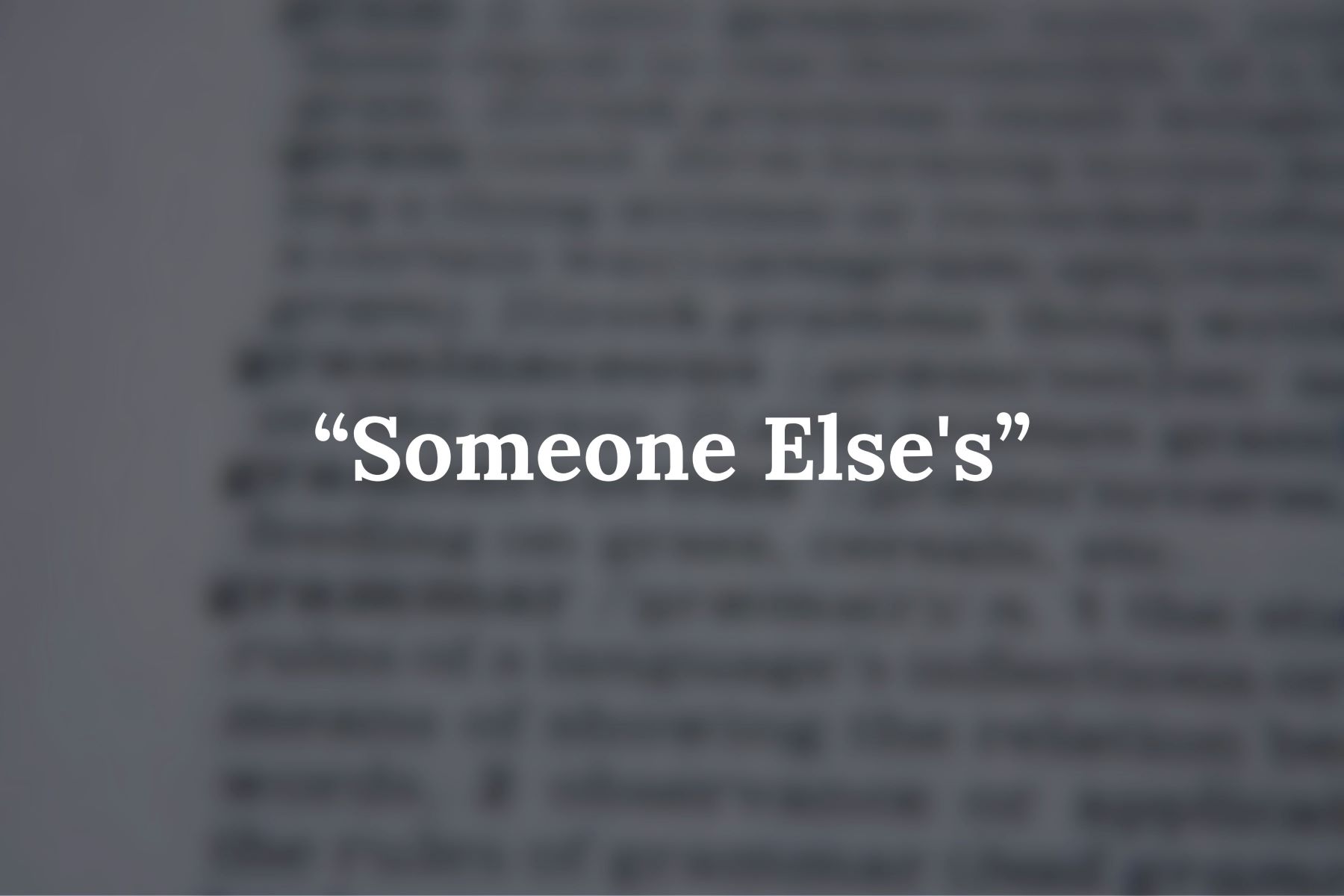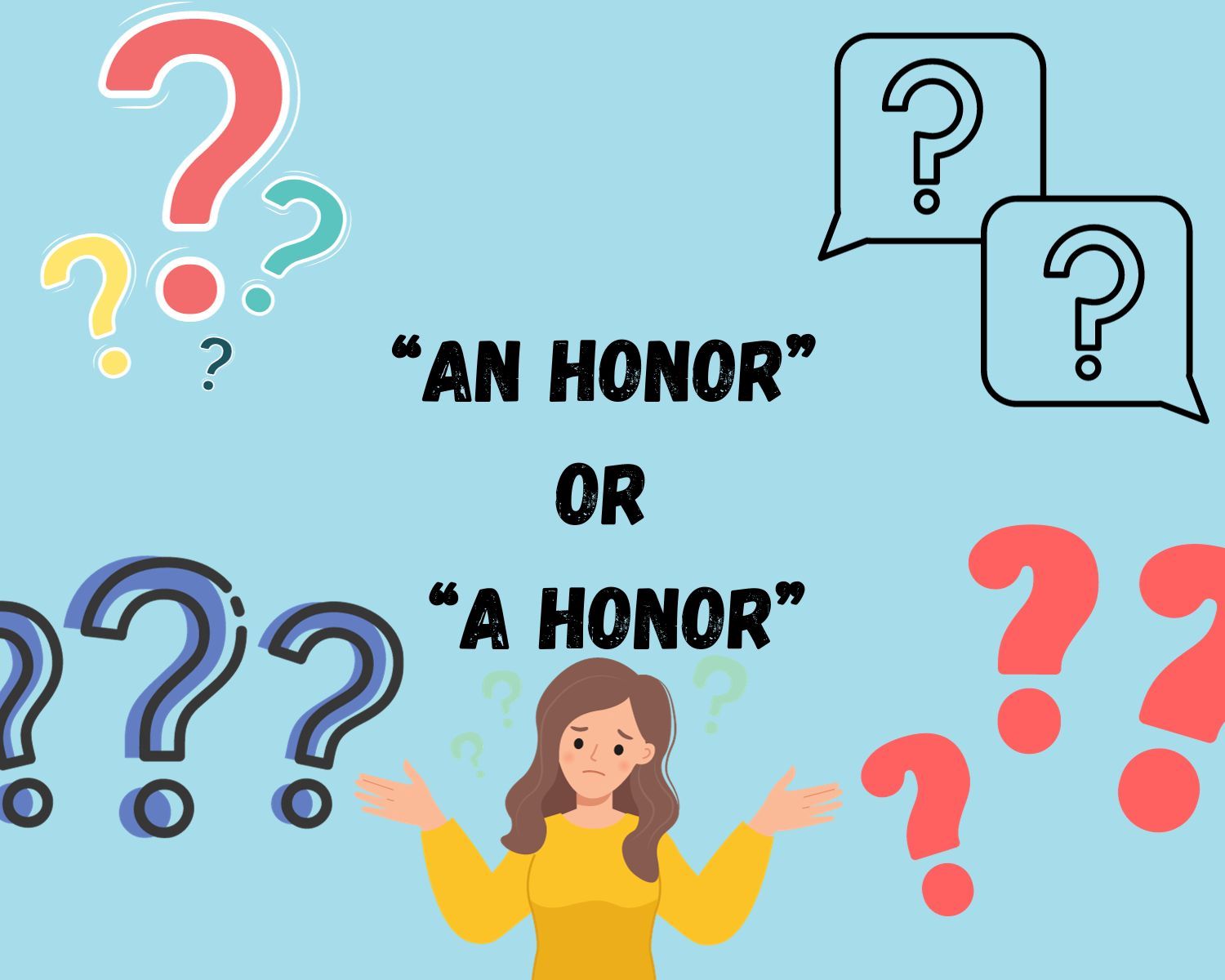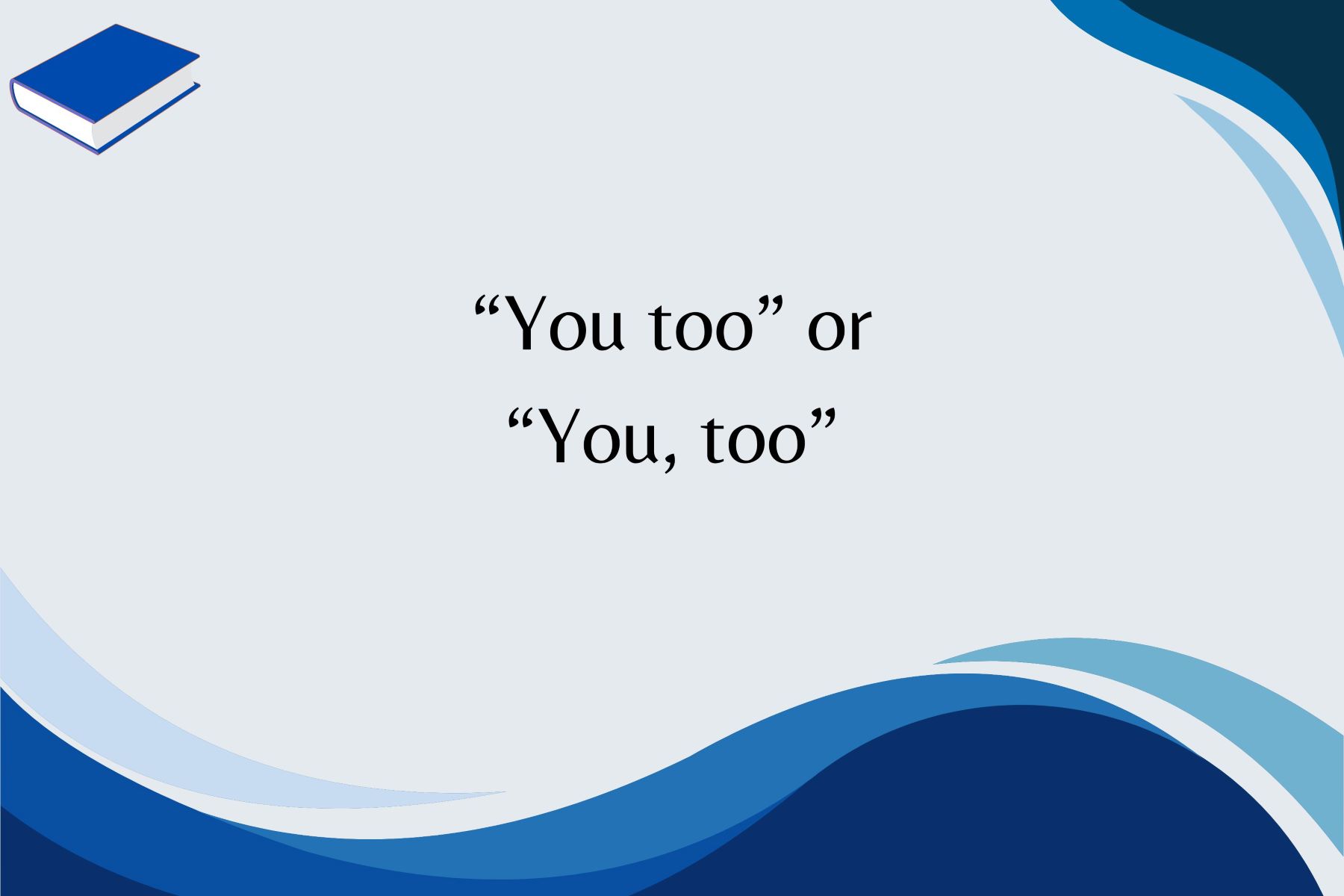Home>Language and Grammar>The Correct Grammar For Possessives: Someone Else’s


Language and Grammar
The Correct Grammar For Possessives: Someone Else’s
Published: January 24, 2024
Learn the correct grammar for possessives, including someone else's, with our comprehensive guide. Improve your language and grammar skills today!
(Many of the links in this article redirect to a specific reviewed product. Your purchase of these products through affiliate links helps to generate commission for Regretless.com, at no extra cost. Learn more)
Table of Contents
Introduction
Possessives play a crucial role in the English language, allowing us to indicate ownership and association. Understanding the correct usage of possessives is essential for effective communication and writing. In this article, we will delve into the nuances of forming possessives, focusing specifically on the often-confusing construction of "someone else's."
By mastering the correct grammar for possessives, you can elevate your writing and convey your intended meaning with clarity and precision. Whether you are a student, a professional, or an aspiring writer, grasping the intricacies of possessives will undoubtedly enhance your language skills and boost your confidence in expressing ownership and relationships.
Let's embark on this journey to unravel the mysteries of possessives, particularly when it comes to "someone else's." With practical examples and insightful explanations, you will gain a solid understanding of how to wield possessives effectively in your writing. So, let's dive in and demystify the correct grammar for forming possessives with "someone else's."
Understanding Possessives
Possessives are a fundamental aspect of the English language, allowing us to denote ownership or association. They enable us to express the relationship between people, objects, and ideas. In essence, possessives answer the question "Whose?" in a sentence. Understanding how to form possessives is crucial for effective communication and clear expression of ownership.
In English, possessives are typically formed by adding an apostrophe and an "s" ('s) to the noun, indicating that the noun possesses something. For singular nouns, this is the most common way to show possession. For example, "the dog's bone" indicates that the bone belongs to the dog.
When it comes to plural nouns, the general rule is to add an apostrophe after the "s" at the end of the word. For instance, "the students' project" signifies that the project belongs to the students. However, when a plural noun does not end in "s," the possessive form is created by adding an apostrophe and an "s" ('s) just like with singular nouns. For example, "the children's toys" demonstrates that the toys belong to the children.
Understanding the concept of possessives goes beyond mere punctuation rules. It involves grasping the underlying meaning of ownership and association. Moreover, possessives are not limited to tangible objects; they can also denote intangible concepts and relationships. For instance, "John's idea" and "friend's support" exemplify how possessives can convey ownership of ideas and relationships.
In the case of "someone else's," the possessive form indicates that something belongs to another person. This construction is particularly important as it allows us to express possession by a third party. Mastering the correct usage of "someone else's" is essential for conveying relationships and ownership accurately in written and spoken communication.
By comprehending the intricacies of possessives, you can wield them effectively in your writing, adding depth and clarity to your expressions. Now, let's delve into the specific formation of possessives with "someone else's" to solidify our understanding of this essential grammatical concept.
Forming Possessives with Someone Else's
When it comes to expressing possession by another individual, the construction "someone else's" plays a pivotal role in the English language. This possessive form allows us to attribute ownership to a person other than the speaker or writer. The correct formation of "someone else's" involves a nuanced understanding of possessives and the application of apostrophes to convey possession accurately.
To form the possessive "someone else's," we start with the noun or pronoun representing the possessor, followed by the word "else," and then the apostrophe-s ('s) to indicate possession. This structure signifies that the item or concept in question belongs to a different, unspecified person. For example, "That book is someone else's" denotes that the book belongs to another individual, not the speaker or the person being addressed.
It's important to note that "someone else's" is a singular possessive form. Therefore, it should be used when referring to a singular possessor, whether known or unspecified. This construction is versatile and can be applied to various contexts, from casual conversations to formal writing, allowing for clear and precise communication of ownership by a third party.
In written communication, the correct usage of "someone else's" contributes to the coherence and accuracy of the message. Whether it's in academic papers, professional correspondence, or creative writing, employing this possessive form effectively communicates the relationship of possession without ambiguity. For instance, "The keys in the drawer are someone else's" unambiguously conveys that the keys belong to another individual.
Understanding the formation of "someone else's" empowers writers and speakers to convey possessive relationships with finesse and accuracy. By mastering this possessive form, you can navigate various scenarios where ownership by an unspecified individual needs to be articulated. It enables you to express possession in a manner that respects the boundaries of ownership and enhances the clarity of your communication.
In summary, mastering the correct formation of "someone else's" as a possessive form is essential for proficient expression in the English language. It provides a means to attribute ownership to an unspecified individual, enriching the depth and precision of written and spoken communication. With a firm grasp of this possessive form, you can navigate the intricacies of expressing possession by another person with confidence and clarity.
Examples of Correct Usage
To grasp the correct usage of "someone else's" in practical contexts, let's explore several illustrative examples that showcase the application of this possessive form. These examples will shed light on how "someone else's" is utilized to convey ownership by an unspecified individual in various scenarios.
-
In a Conversation:
- "I found a wallet on the street, but it's someone else's. I'll hand it over to the lost and found."
- In this instance, the speaker clearly indicates that the wallet does not belong to them but to another unidentified person. The use of "someone else's" succinctly communicates the ownership of the wallet by a third party.
-
In a Formal Setting:
- "The report on the desk isn't mine; it's someone else's. I believe it belongs to the new intern."
- Here, the speaker employs "someone else's" to disassociate themselves from the report and attribute its ownership to an unspecified individual. This usage maintains a professional tone while effectively conveying possession by another person.
-
In Written Communication:
- "The phone left in the conference room is someone else's. Please ensure it is returned to its rightful owner."
- In this written notice, the use of "someone else's" serves to clearly denote that the phone belongs to an unidentified individual. This ensures that the message is conveyed with precision and respect for the owner's possession.
-
In a Narrative:
- "As I walked through the park, I stumbled upon a picnic blanket that was someone else's. It seemed to have been left behind after a family gathering."
- This example showcases the use of "someone else's" in a descriptive narrative, effectively conveying the ownership of the picnic blanket by an unspecified possessor. The possessive form adds depth to the narrative by highlighting the presence of another individual's belongings.
-
In a Formal Announcement:
- "The keys found in the lobby are someone else's. Please inquire at the front desk to claim them."
- This formal announcement utilizes "someone else's" to unequivocally communicate that the keys belong to a different individual. The use of this possessive form ensures clarity and avoids any confusion regarding the ownership of the keys.
These examples demonstrate how "someone else's" is seamlessly integrated into various contexts to convey possession by an unspecified person. By employing this possessive form accurately, speakers and writers can articulate ownership with precision and respect for the possessions of others. This ensures that communication is clear, unambiguous, and considerate of the relationships of possession in different situations.
Common Mistakes to Avoid
Mastering the correct usage of possessives, including the formation of "someone else's," involves steering clear of common mistakes that can detract from the clarity and precision of communication. By being mindful of these pitfalls, writers and speakers can elevate their language skills and convey ownership with accuracy. Here are some common mistakes to avoid when using "someone else's" as a possessive form:
Read more: Which Is Correct: Peoples’ Or People’s?
Incorrect Placement of Apostrophes:
One prevalent mistake is the misplacement of apostrophes when forming "someone else's." It is essential to remember that the apostrophe should precede the "s" in this possessive construction. Incorrect placement, such as writing "someone elses's," can lead to confusion and detract from the intended meaning. By ensuring the proper placement of the apostrophe, writers can convey possession accurately and maintain grammatical correctness.
Incorrect Spelling and Punctuation:
Another common error involves misspelling "someone else's" or omitting the necessary punctuation. In written communication, overlooking the correct spelling or punctuation of this possessive form can undermine the professionalism and coherence of the message. Writers should pay attention to the precise spelling and punctuation of "someone else's" to uphold the integrity of their writing and effectively convey possession by a third party.
Confusion with Plural Possessives:
A frequent mistake arises when writers confuse the singular possessive "someone else's" with the plural possessive "someone else." It is important to differentiate between these forms, as "someone else's" indicates possession by a singular, unspecified individual, while "someone else" does not convey ownership. By understanding this distinction, writers can avoid misrepresenting possession and ensure the accurate expression of ownership by another person.
Ambiguous Attribution of Ownership:
Using "someone else's" without clarity regarding the possessor can lead to ambiguity. It's crucial to provide context or identify the possessor when employing this possessive form. Failing to specify the individual to whom the possession belongs can result in confusion for the reader or listener. Writers should strive to provide sufficient context to ensure that the intended meaning of "someone else's" is conveyed unambiguously.
Overuse or Misapplication:
Overusing "someone else's" or employing it in inappropriate contexts can diminish its impact and clarity. It's important to use this possessive form judiciously, ensuring that it is applied when indicating ownership by an unspecified person. Overreliance on "someone else's" or using it where a specific possessor can be identified may dilute the precision of the communication.
By steering clear of these common mistakes, writers and speakers can wield "someone else's" effectively, conveying possession by an unspecified individual with accuracy and coherence. Understanding and avoiding these pitfalls contribute to the mastery of possessives and the enhancement of overall language proficiency.
Conclusion
In conclusion, the correct grammar for forming possessives, particularly when using "someone else's," is a crucial aspect of effective communication in the English language. Possessives serve as the linguistic tool for denoting ownership and association, allowing writers and speakers to convey relationships and ownership with precision and clarity. By mastering the nuances of possessives, individuals can elevate their language skills and enhance the coherence of their written and spoken expressions.
The formation of possessives with "someone else's" holds significant relevance in various contexts, from casual conversations to formal writing. It enables the attribution of possession to an unspecified individual, enriching the depth and accuracy of communication. Understanding the correct structure of "someone else's" – starting with the possessor, followed by "else," and the apostrophe-s – empowers individuals to communicate ownership by a third party seamlessly.
Furthermore, the examples provided illustrate the versatile application of "someone else's" in different scenarios, showcasing its role in conveying possession by an unidentified individual. Whether in conversations, formal settings, written communication, narratives, or announcements, the precision of "someone else's" ensures that ownership is articulated with respect and clarity.
Avoiding common mistakes such as misplacement of apostrophes, misspelling, confusion with plural possessives, ambiguous attribution of ownership, and misapplication is essential for upholding the integrity and accuracy of possessive expressions. By steering clear of these pitfalls, writers can wield "someone else's" effectively, ensuring that possession is communicated with coherence and precision.
In essence, the correct grammar for possessives, including the formation of "someone else's," is a fundamental component of linguistic proficiency. It enables individuals to navigate the intricacies of ownership and association, fostering clear and unambiguous communication. By embracing the intricacies of possessives, writers and speakers can enhance the depth and accuracy of their expressions, ultimately enriching the quality of communication in both formal and informal contexts.












